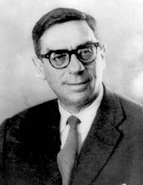

XXVII), such as his thesis on Herculano. As for O Campo de São Paulo [The São Paulo Region], Nemésio clarifies in the "Preface": " This work does not stem from personal archival research, nor, strictly speaking, from original historical elaboration ." (p. X). Instead, it offers a " global narrative of events " surrounding the city’s foundation as part of a broader project: " to determine the origins and purpose of human settlement in Brazil, from the intermittent coastal landings that followed Pedro Álvares Cabral’s discovery in 1500 to the first stable settlement in the hinterland, on the Vicentine Plateau, in 1553–1554, by the Jesuits under Father Manuel da Nóbrega ." (p. X). To this end, Nemésio sought to " historically recount the interconnected emergence of the Society of Jesus and Brazil in the first half of the 16th century " while acknowledging his limitations: " This book, in everything beyond the scope of Jesuit activity in Brazil, is strictly indebted to the classical bibliography on the subject [...] Given the narrative nature of this book, extensive footnotes were avoided. Essential references to historiographical sources and minor details are included at the end of the volume ." (p. XII).
His approach is based on the Cartas Jesuíticas [Jesuit Letters] published by the Brazilian Academy of Letters, which he had read and annotated during his student years: " I tried to work as much as possible directly with the letters of the Fathers and Brothers, preferring to let them speak for themselves about the people and events of their formidable experiences rather than narrate them myself. [...] It is far too easy to be a good writer by relying on commas and italics ." (p. XIII). In the preface to the 3rd edition (1971), he regrets " not having had the time to revise the work ," extending it to cover the foundation of Rio de Janeiro, " whose fourth centenary (1965) I celebrated in Ode ao Rio " (p. XV). This sentiment reveals Nemésio’s unique relationship with h istory: for him, both study and poetry serve the same purpose of celebrating human activity. The book opens with the biography of the founder: " The life of Saint Ignatius of Loyola has been told a thousand times " (p. 3). This confirms what, for Nemésio, is the primary function of the historical dimension: to understand phenomena, one must first understand people. The biographies of "figures" or "characters" (terms used in some of his archival notes) were his true focus. This is exemplified in his profile of Herculano, where literature, history, and culture converge to explore the relationship between the individual and time:
This work is financed by national funds through FCT - Foundation for Science and Technology, I.P, in the scope of the projects UIDB/04311/2020 and UIDP/04311/2020.
